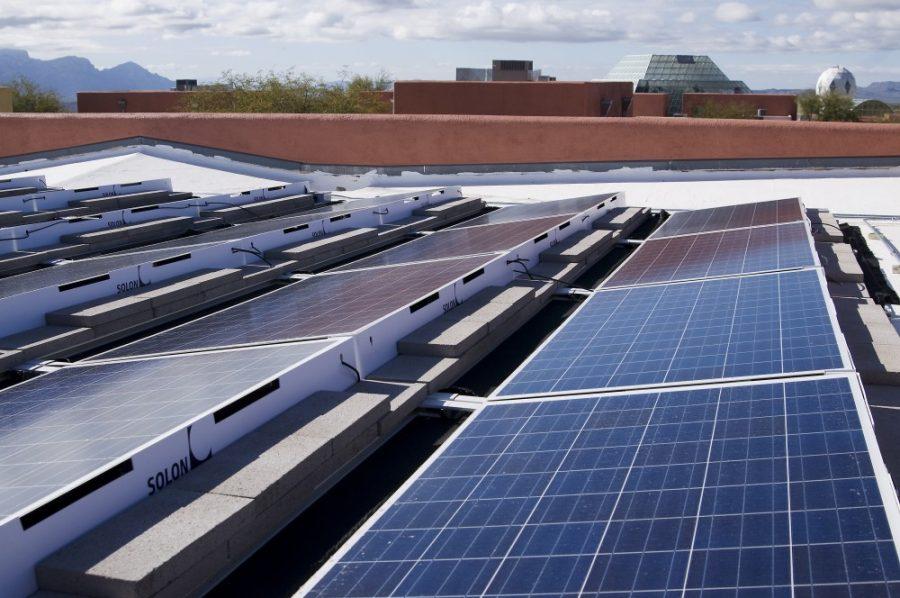The Biosphere 2 Conference Center building is being used to pilot a new, locally manufactured type of solar panel, which is predicted to benefit the advancement of solar technology.
The panels are made by the SOLON Corporation, a Tucson-based solar equipment manufacturer, and are now being used for studies in sustainability as well as electricity after their installation last October.
The new paneling system, known as SOLquick, is designed specifically for commercial rooftops, according to SOLON Corporation Director of Research and Development Bill Richardson. The panels require no tools during installation and can be installed and working in 85 percent less time than standard photovoltaic panels, Richardson said. Additionally, SOLquick panels require no penetration into the roof itself. This type of innovation, according to Richardson, was what made Biosphere 2, an environmental research center, a good place to test the system.
“SOLON has a history of working with the U of A, and (we) find that they are a great partner,” Richardson said. “Biosphere is perfect, really, because there’s all kinds of great testing that can happen out there. They’re always looking at new ways to integrate renewable energy, and so it was a perfect fit.”
Now three months into the system’s testing, SOLON has since taken the SOLquick product to a number of trade shows, and is in the process of getting it into the market for commercial entities to use, according to Patricia Browne, SOLON’s director of marketing and communications.
From Biosphere 2’s standpoint, testing the system within the facility was also appropriate given the projects that are currently studying renewable energy, according to Nathan Allen, the sustainability coordinator at Biosphere 2. Allen said that Biosphere 2 is studying renewable energy innovation and making it as efficient as possible.
“They’re (SOLON) really pushing the envelope with trying to bring down the cost of solar,” he added. “It really fit right in with both of our mutual interests.”
In addition to the research and other benefits that scientists at Biosphere 2 expected from the panels, Allen said there have already been extra research opportunities directly resulting from the panels’ installation. Using a combination of tools they previously had, as well as the new solar panels, scientists are now analyzing how water flows off of buildings.
Funding for the project, according to Allen, is a simple equipment exchange, which is dictated under a short-term contract. Biosphere 2 received the system at no charge, and in return, SOLON has a place to pilot the panels for research of their own. The agreement is currently temporary and once it expires, a new set of terms will need to be outlined, Allen said.
According to Richardson, the collaboration between the UA and SOLON through Biosphere 2 has been paramount, not only to the success of the SOLquick system, but to the evolution of renewable energy, namely solar technology.
“How do we get more renewable energy integrated? It’s about making it more efficient and bringing down the cost, and you need smart people to figure out how to do that,” Richardson said. “Where do you find smart people? You find them in places like the University of Arizona. So, for us to be able to work closely with an institution that’s looking into the future about how to solve some of the issues, that’s important.”
In terms of the UA, Allen said that being able to pilot this system at the Biosphere 2 facility has enhanced the university’s reputation as a research institution while giving students a chance to use something that has immediate real-world applications.
“If you have students who are learning and innovating using a particular technology, they will understand the advantage of those technologies and want to use them,” Allen said. “It’s been amazing to see how sustainability initiatives through the students have matured and have really come to play a significant role in sustainability efforts on campus.”









